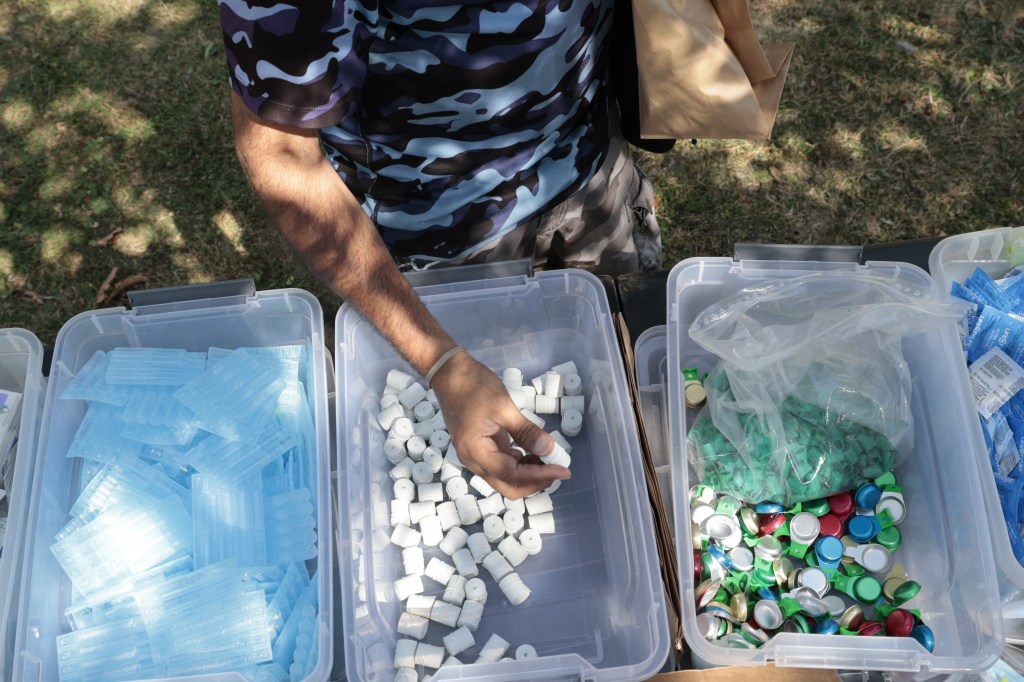Chicago and Cook County are on pace to see a drastic decline in opioid-related fatalities in 2024, keeping with a nationwide downturn in fatal drug overdoses since the peak of the COVID-19 pandemic.
Public health and law enforcement officials point to a variety of factors that could be responsible. Increased community outreach, addiction treatment efforts and less available fentanyl all likely play a role, they said.
Through Sept. 20, Cook County had recorded 806 opioid-related deaths this year, according to data from the medical examiner’s office. Of those, 580 occurred in Chicago. In that same time frame in 2023, the county saw 1,363 opioid-related deaths with 1,022 in Chicago.
The number of opioid-related deaths so far this year is likely higher than medical examiner data suggests — it often takes several weeks for the results of post-mortem toxicological screenings to return — but there are signs of progress. Year-to-date, opioid deaths in Chicago are down more than 40%.
“Whereas we have seen opioid overdoses spike over the summer for the past several years, this year we saw that, other than May when we saw that big spike over the city, we have seen, generally, a tapering of that trend in the summer,” said Dr. Miao Jenny Hua, medical director of behavioral health at the Chicago Department of Public Health. “Essentially, we flattened the curve in the summer months.”
Dr. Hua said EMS responses for nonfatal overdoses are down 23% so far this year, too, but noted that overall opioid fatalities still outpace those recorded before the COVID-19 pandemic.
The city saw a cluster of dozens of overdoses on a single day in May, Dr. Hua said. After an investigation conducted with the Centers for Disease Control and Prevention, it was determined that a new chemical — medetomidine, a sedative used in veterinary medicine — was present in some of the city’s narcotics supply. That month, the CDC announced that fatal drug overdoses fell by 3% in 2023, the first decline in fatalities since 2018.
Over the summer, the city bolstered its outreach efforts, going door-to-door in West Side neighborhoods to distribute intranasal Narcan kits — also available at all Chicago Public Library branches — and working with the state to operate a 24/7 opioid crisis hotline. Between mid-May and late August, CDPH handed out more than 1,000 Narcan kits and more than 10,000 fentanyl test strips, according to the department.
Outreach can only account for so much, though, and the volatile nature of the greater narcotics economy, in Chicago and nationally, remains a hurdle.
“Some of our efforts at stemming the root causes of overdoses, at responding to this as a public health crisis, such as getting people into treatment, making sure that there are fewer people actually living with unmanaged substance use disorder, those type of efforts are likely not driving this more recent, precipitous decline and it’s more supply-chain-related,” Hua said. “And if that’s the case, whenever the supply chain issues resolve themselves, and I trust that they will at some point, then we’re likely to see overdoses spike again.”
NPR reported earlier this week that the supply of fentanyl — an opioid present in the vast majority of fatal overdoses in Cook County — entering the United States was greatly curtailed in recent months, both by efforts to stop it at the border and through government pressure to address the supply of precursor chemicals in other countries.
“Fentanyl remains the deadliest drug threat facing our country, and the DEA remains focused on the mission of saving lives throughout Illinois, Indiana and Wisconsin,” Luis Agostini, a spokesperson for the DEA’s Chicago office, said in a statement. “The recent decrease in opioid-related deaths and fentanyl poisonings is a reflection of the shared commitment between federal, state and local law enforcement in holding fentanyl traffickers accountable, as well as the individuals and organizations working tirelessly in the prevention, education, treatment and recovery spaces.”
Despite the marked downturn so far this year, opioid deaths still outpace totals seen before the COVID-19 pandemic. Moreover, in Chicago, the narcotics epidemic remains most acutely felt in a handful of neighborhoods on the city’s West Side where gun violence — often a byproduct of gangs fighting over drug sales turf — has remained relatively commonplace for decades.
Several drug markets operate within the CPD’s Harrison District (11th) — Chicago and Homan avenues, Gladys and Springfield avenues, among others — and those same areas often experience the highest rates of gun violence in the city.
Since COVID, the number of narcotics-related arrests by CPD officers has also fallen sharply. City data show there were more than 15,000 narcotics arrests in 2019. Since then, annual drug arrest totals have hovered near 5,000, records show.
In 2018, the city launched the Narcotics Arrest Diversion Program, steering people to drug treatment instead of incarceration, provided they meet certain criteria. Dr. Hua said the program, now operating citywide, has so far served about 3,000 people.
